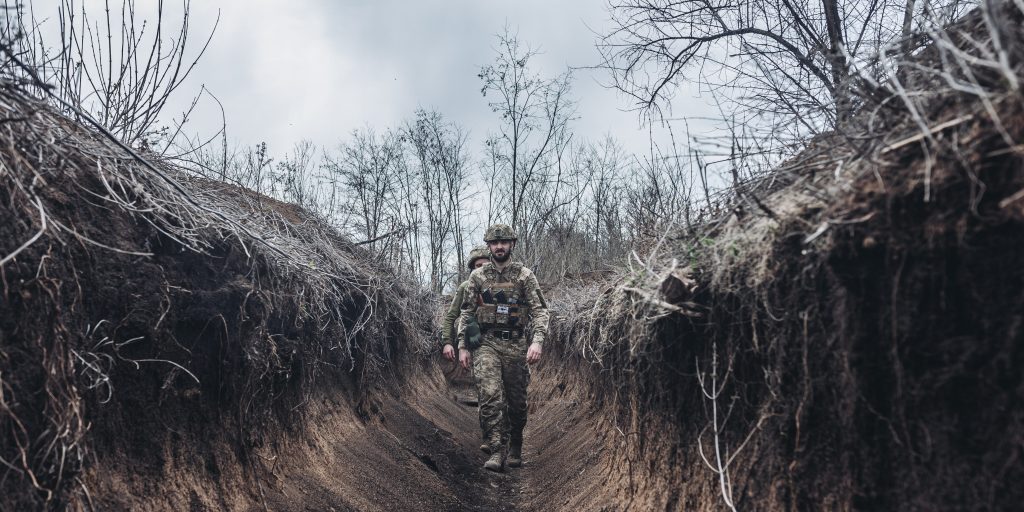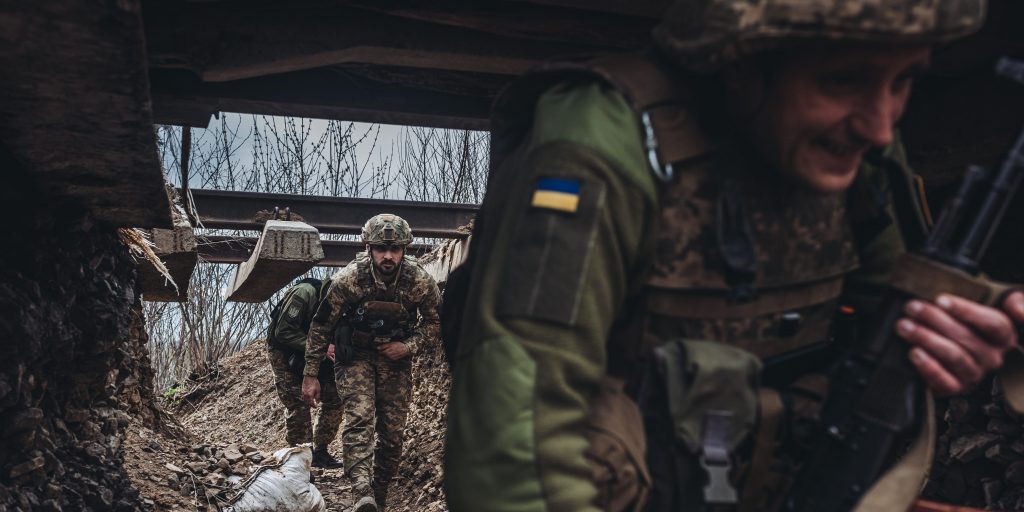- Russia has launched a new phase of war focused on Ukraine's east after its defeat near Kyiv.
- Russia may have certain advantages fighting in the Donbas, but that does not necessarily mean they are better off than the Ukrainians.
- Experts say the problems Russia experienced in the beginning of the war will likely continue to plague them.
Following its failure to take Kyiv, Russia launched a new phase of the war on Tuesday, focusing on the Donbas region and eastern Ukraine that gives its battered military a landscape they are more used to fighting in.
Russia may have some advantages fighting in the Donbas, but that does not necessarily mean they are better off than the Ukrainians in this phase of battle, Jeffrey Edmonds, a former US Army tanker and CIA military analyst, told Insider.
Moscow's advantages in the east include greater logistical ease — as they'll be moving through secure, separatist territory where fuel and resupply vehicles are less exposed to ambush — as well as the ability to concentrate on a smaller geographical area, said Edmonds, who is a defense expert at the research group CNA. The Russians may also be able to make better use of their air force, as they can now launch strikes from nearby Russian-controlled territory.
Edmonds added that the naming of a new war commander, Aleksandr Dvornikov, will create a streamlined command and control structure, and that the open terrain in the east creates a fighting climate more favorable to the Russians. Back in the north, Ukrainian soldiers took cover behind trees and shrubs to ambush Russian tanks. In the Donbas, Russia may be able to better utilize their armored vehicles and artillery.
However, the problems the Russian military experienced in the first phase of the war — such as poor leadership, sloppy tactics and ill-trained troops — will likely continue to plague them and hurt their chances to seize more territory against an entrenched and increasingly well-supplied Ukraine, which is now receiving artillery and armored vehicles from the US.
"What's working against [the Russians] is the fact that they're trying to bring together a bunch of units that haven't worked together well and that are pretty bloody from the conflict so far," Edmonds said.
Unlike Ukraine, Russia is not receiving aid and new equipment from other countries — instead, it's drawing on its large stockpile, said Mark Cancian, a retired US Marine colonel and senior advisor with the Center for Strategic and International Studies.
"Certainly, it's likely that they have lost as much in this war as they did in 10 years in Afghanistan," Cancian said. "So they've taken, by current standards, pretty large casualties, and they're not getting resupplied."

Over the first six weeks of war, the Russian military has faced heavy losses, with a NATO official estimating then that 40,000 of their troops had been captured, injured, or killed. The official, who spoke to news outlets under the condition of anonymity, said in late March that between 7,000 and 15,000 troops have died in the conflict, and that Russian forces are experiencing low morale and dealing with significant logistical issues.
Many Russian battalions were so severely damaged in the north that they won't be able to deploy to the east anytime soon, Ukrainian and Western officials said, according to the Wall Street Journal.
"We've seen indications on some units that are, literally, for all intents and purposes, eradicated," a senior Pentagon official told the Journal. The official added that Russia is attempting to mobilize 60,000 troops for this next phase of the war.
Mason Clark, the lead Russia analyst at the Institute for the Study of War, described the way Russia is continuing to conduct small, daily attacks in eastern Ukraine instead of pausing to prepare for a larger offensive.
"[Russia is] sort of continuing to just feed these small units into minor attacks that probably aren't going to achieve any major gains, particularly since a lot of the units are incredibly damaged from the fighting in northeastern Ukraine," Clark said.
"[The Russians are] trying the same thing that they did in northeastern Ukraine, which is the small individual lines of advance of companies and battalions that aren't really large scale offensives that haven't been able to break through in the past," Clark continued. "So I'm fairly optimistic that Ukrainian forces are going to be able to, in large part, hold them back."
To Edmonds, much of Russia's war trajectory in this second phase relies on Ukraine's ultimate goal — whether or not the country wants to push Russian forces out of the Donbas.
"Do they want to push the Russians back into Russia and retake the Donbas? Do they just want to contain what the Russians have? And then, what can they do?"
Before the war began, Edmonds said he thought it unlikely Ukraine could persist against Russia, but now he's more unsure.
"The Russians have proven themselves to be pretty inadequate, and the Ukrainians have proven themselves to be pretty tough."
